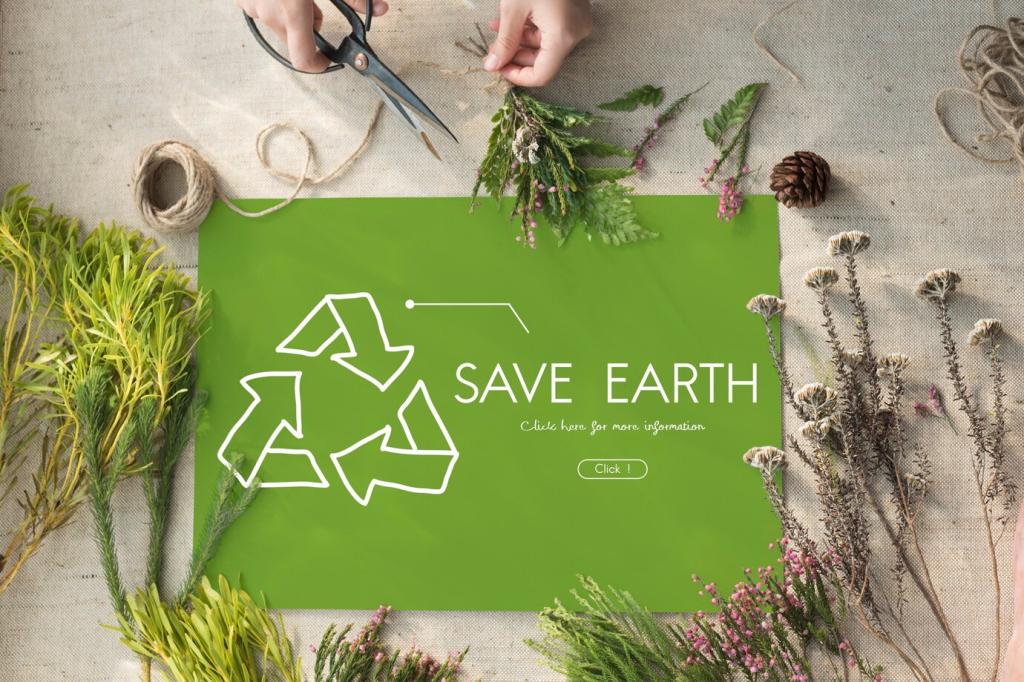Sustainable materials have become an essential focus in modern interior design, serving as both a reflection of ethical responsibility and an opportunity for creative innovation. By carefully choosing environmentally conscious materials, designers can create spaces that enhance well-being, reduce environmental impact, and support a healthier planet. The use of sustainable resources in interior design not only lowers a space’s carbon footprint but also showcases the beauty and versatility of ethically sourced elements. This guide explores various facets of sustainable materials, offering insights into their benefits, sourcing, environmental impact, and integration into striking and functional interiors.
Choosing Eco-Friendly Materials
Evaluating a material’s complete life cycle—from resource extraction and manufacturing to use and eventual disposal or recycling—is central to sustainable interior choices. By considering each phase, designers can prioritize products that have minimal environmental and health impacts. Life-cycle assessment tools help compare alternatives and identify opportunities to reduce emissions and resource depletion. Integrating these insights ensures that the environmental cost of a material is fully accounted for, leading to spaces that not only look beautiful but also tread lightly on the earth.

The Environmental Impact of Traditional Materials
Wood and Deforestation Concerns
Timber has been a staple of interior design for centuries, prized for its warmth and adaptability. Yet, pervasive logging and unsustainable harvesting practices have accelerated deforestation, threatening vital ecosystems and biodiversity worldwide. Certification systems like FSC (Forest Stewardship Council) offer assurance that wood products are sourced responsibly, but widespread adoption remains inconsistent. Conscious designers now navigate the complexities of ethical sourcing, shifting demand toward reclaimed wood or sustainably managed forests to reduce ecological harm while retaining the aesthetic advantages of timber.
The Heavy Footprint of Concrete and Steel
Concrete and steel define much of modern construction, providing structural strength and a sleek aesthetic. Their production, however, generates significant carbon emissions and consumes vast amounts of energy and raw materials. The cement industry alone accounts for around seven percent of global CO2 emissions. Steel manufacturing similarly contributes to pollution and intensive resource use. Designers looking to lower environmental impact increasingly investigate alternatives such as low-carbon concrete mixes, recycled steel, or entirely new materials, integrating innovation with environmental responsibility.
Synthetic Fabrics and Chemical Off-Gassing
Many widely used textile products, including upholstery, rugs, and curtains, are made from synthetics like polyester and nylon. These fabrics are derived from fossil fuels and often processed with chemicals that can off-gas volatile organic compounds (VOCs), negatively affecting indoor air quality and occupant health. Synthetic textiles also contribute to microplastic pollution during washing and eventual disposal. Switching to natural or recycled fibers, and prioritizing certifications for low chemical emissions, offers a pathway to healthier, more sustainable interiors.
Previous
Next
Organic Cotton and Linen
Organic cotton and linen emerge from sustainable agricultural practices that prioritize reduced chemical usage and soil health. Certified organic textiles are free from harmful pesticides and synthetic fertilizers, making them safer options for both consumers and the planet. In interior spaces, these breathable and durable fibers find application in everything from bedding and drapery to upholstery and soft furnishings. Their natural textures offer timeless appeal, while their smaller environmental footprint makes them a cornerstone of green interiors.
Wool and Its Renewability
Wool is a natural, renewable fiber harvested annually from sheep without harm to the animals. Its inherent insulation properties make it ideal for rugs, carpets, and upholstery, bringing both comfort and energy-saving benefits. The biodegradability of wool ensures that at the end of its lifespan, it returns safely to the earth. Sourcing wool from ethical operations further supports animal welfare and regenerative land management, reinforcing its place as a mainstay of sustainable interior textiles.
Plant-Based Alternatives Like Hemp and Jute
Hemp and jute stand out as environmentally superior fibers due to their rapid growth, minimal water requirements, and natural pest resistance. These robust, versatile materials are transformed into area rugs, wall coverings, and decorative elements that bring organic texture and visual interest to interiors. Their cultivation improves soil health and doesn’t rely on intensive chemical inputs, underscoring their value in the push for sustainable materials. Interiors featuring hemp and jute celebrate an earthy elegance paired with ecological mindfulness.
Low-Impact Finishes and Treatments

Non-Toxic Paints and Sealants
Conventional paints, varnishes, and sealants often contain high levels of VOCs, which release pollutants into the indoor environment and can trigger respiratory or allergic reactions. In response, a new generation of non-toxic, low- or zero-VOC paint and finish products has entered the market. These alternatives safeguard indoor air quality and promote occupant health without compromising color selection or application ease. Designers who choose these sustainable options underscore their commitment to creating spaces that prioritize both environmental and human well-being.

Natural Oils and Waxes
Natural oils such as linseed or tung oil, and waxes derived from plants or bees, offer an alternative to synthetic finishes for wood and other porous surfaces. These products penetrate fibers, highlighting natural grain and enhancing durability without sealing in toxins. Unlike chemical lacquers, natural oil and wax finishes are readily renewable and biodegradable. Their use imparts warmth and an organic aesthetic, while simplifying maintenance routines. Adopting such treatments is a step toward healthier, more sustainable interiors with authentic natural beauty.

Water-Based Adhesives and Finishes
Water-based adhesives and finishes minimize exposure to harmful solvents and release significantly fewer airborne pollutants than traditional petroleum-derived products. These innovations have made it possible to achieve strong bonds and durable finishes on flooring, paneling, and furnishings without contributing to indoor pollution or environmental toxicity. As awareness grows about the cumulative impact of chemical emissions, the industry sees increasing demand for water-based alternatives that uphold style, safety, and sustainability in equal measure.
Biophilic Design and Material Choice
Research shows that spaces incorporating natural materials such as wood, stone, and clay promote emotional well-being, reduce stress, and improve focus. These materials elicit positive psychological responses, partly because they engage the senses and mimic the soothing complexity of outdoor environments. Sustainable interiors that foreground authentic, natural elements cultivate relaxation and foster healthier lifestyles, supporting the overall goals of biophilic design.
Certifications and Standards in Sustainable Design
FSC, PEFC, and Responsible Forestry
Certifications such as the Forest Stewardship Council (FSC) and Programme for the Endorsement of Forest Certification (PEFC) assure buyers that wood and paper products originate from responsibly managed forests. These standards safeguard biodiversity, protect workers’ rights, and maintain sustainable harvesting cycles. Designers seeking to use wood in a sustainable manner can confidently specify FSC or PEFC-labeled products, ensuring their projects promote forest conservation and responsible resource use on a global scale.
GreenGuard and Indoor Air Quality
The GreenGuard certification assesses materials for low chemical emissions, directly tying them to improved indoor air quality. Products bearing this mark have passed rigorous laboratory testing to ensure that they emit minimal VOCs and other harmful substances. GreenGuard recognition enables designers to specify paints, flooring, furniture, and textiles that align with the latest health and sustainability benchmarks, creating interiors that are as safe as they are beautiful. Relying on such certifications supports transparency and empowers clients to make informed choices.
Life-Cycle Product Declarations
Life-cycle product declarations (EPDs) provide comprehensive data on a material’s environmental impacts, including resource consumption, emissions, and end-of-life possibilities. These documents, often third-party verified, allow designers and clients to compare materials based on factual, harmonized metrics. Integrating EPDs into the material selection process ensures that sustainability claims are substantiated and that design decisions reflect a holistic understanding of environmental impact. This transparency elevates both the accountability and credibility of sustainable interior projects.
